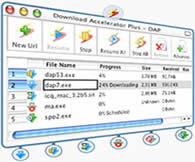

- Cpu speed accelerator for mac manual#
- Cpu speed accelerator for mac pro#
- Cpu speed accelerator for mac mac#
The second most important aspect of storage is the read speed, which is the speed at which the Mac is able to gather data from storage.

QLab workspaces are generally very small, so the real determining factor is the total size of all the media files used by your workspace. The most important aspect of storage is thankfully the simplest you need to have a sufficient amount of storage installed in your Mac to hold the data needed for your show.
Cpu speed accelerator for mac manual#
It appears to be true that Apple Silicon-based Macs need less memory to run the same software as an equivalent Intel-based Mac, but as of the writing of this manual there is not enough information to provide more specific guidance. Intel-based Macs and Apple Silicon-based Macs handle memory very differently. QLab is able to address as much memory as your Mac provides. As with processing power, more complex shows can benefit from (and may require) more memory. 4 GB should be considered the minimum for even the simplest of shows, and 8 GB should be considered the minimum for shows of middling complexity or higher. Loading and playing cues uses memory, so the more audio or video that needs to be loaded at any given moment, the higher the memory requirement will be. They truly are better in every single way. If you are spending money on a Mac that’s new to you, we cannot overstate how much better the Apple Silicon Macs are.
Cpu speed accelerator for mac pro#
Despite this, most Apple Silicon Macs outperform even the most powerful Mac Pro with a Xeon processor. Xeon processors, found in the Mac Pro and iMac Pro only, offer the best possible performance for an Intel Mac.i7 and i9 processors are much better at running multiple simultaneous cues and live effects,.i3 and i5 processors can handle simple shows,.You can also find refurbished or older but still new-in-box Macs which use Intel processors. M1 Ultra processors offer the best possible performance.M1 Pro, M1 Max, M2 Pro, and M2 Max offer superb performance with higher limits on displays.Their main limitation is related to the number of displays that they can drive. M1 and M2 processors offer terrific performance.New Macs are available today with Apple Silicon processors. Playing whole files for cues versus setting custom start times and end times.Using a single media file as the target of multiple cues.(The file size per se is not important, although higher resolution, sample rate, and bitrate often go hand in hand with larger file sizes.) The file size of media targeted by Audio and Video cues.The total number of cues in a workspace.The complexity of AppleScripts run by Script cues.Ĭonversely, here are some things which generally do not have much of an impact on the amount of processor power needed by QLab:.The use of live audio and video effects.The number of lighting instruments used in Light cues.The sample rate, bit depth, and number of channels of audio files played by Audio cues.The resolution, frame rate, and bitrate of video files played by Video cues.The number of simultaneously running cues.These things all have a substantial impact on the amount of processor power needed by QLab: Processor power has the most straightforward relationship to QLab performance the more work QLab needs to do, the more processor power it will use. This section of the manual aims to discuss general concepts surrounding processor, graphics, memory, and storage as they pertain to QLab, and should be read not as directions about what to do, but as recommendations about what to consider. As a consequence, it can be difficult to lay down strict rules about how much computing power QLab needs to run well. QLab is designed to be as flexible as possible so that it can be useful in a wide range of settings. While it is technically possible to run QLab in a virtual machine or on a home-built “hackintosh,” these configurations have unpredictable problems and are neither recommended nor supported.Īpple tends to refer to technical specs in non-technical language, such as “processor” instead of “CPU” and “memory” instead of “RAM.” While reasonable people may differ on whether this decreases or increases confusion, this manual will attempt to match Apple’s terminology where possible in hopes of making it easier to compare Apple’s published specifications against the experience of QLab users. QLab 5 runs natively on both Apple Silicon processors and Intel processors. It requires macOS Big Sur (macOS 11) or higher, and can run on any Mac that can run macOS Big Sur or higher.


 0 kommentar(er)
0 kommentar(er)
